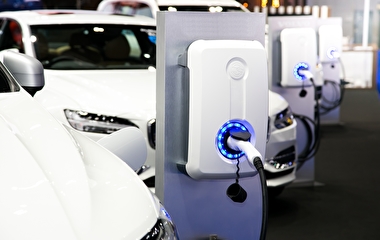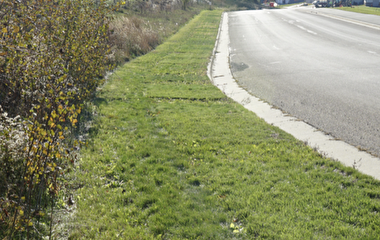
Local governments and jurisdictions across Minnesota (and around the country) are rapidly adopting new and ambitious goals for reducing greenhouse gas (GHG) emissions. However, with many strategies to choose from, it can be hard to determine which offer the best return on investment.
A new online planning tool from the Metropolitan Council aims to take the guesswork out of local-level GHG reduction planning for Twin Cities communities. The tool was developed in partnership with researchers from academic institutions in the Sustainable Healthy Cities Network, including the University of Minnesota.
In the CTS-hosted Transportation and Climate Action webinar in May, Metropolitan Council senior researcher Mauricio León gave an overview of the new tool and how it will help local governments make informed decisions that align with their specific goals and plans.
“By using this interactive online tool, local governments will be able to quantify the most cost-effective methods for reducing emissions in their transportation sector and prioritize the actions that will provide the best value,” said León, now with Hennepin County Public Works. León is also a PhD student in the U’s Humphrey School of Public Affairs and vice chair of the CTS Environment and Energy in Transportation Research Council.
U researchers involved in the project included Professor Anu Ramaswami, formerly of the Humphrey School and now with Princeton University; Frank Douma, director of state and local policy at the Humphrey School’s Institute for Urban and Regional Infrastructure Finance; and Alireza Khani, associate professor in the Department of Civil, Environmental and Geo- Engineering.
León explained that the tool focuses on the biggest GHG sources that can be addressed at the local level: energy use in buildings, land-use management, and transportation. Within the transportation bucket, the tool considers five different strategies: compact development, telework, road pricing, electric vehicles, and transit. For each of these strategies, researchers looked at both the benefits of the actions as well as potential rebound effects.

“For example, when we were thinking about electric vehicles, we also needed to consider the energy grid and Minnesota’s new goals for requiring the entire grid to be powered by clean energy by 2040,” León said.
Users can choose a city or township in the Twin Cities region, then select predefined strategy bundles or customize their own. The tool calculates emission reductions by 2040 and graphs the difference between outcomes with and without the reduction strategies.
Following León’s presentation, a panel of practitioners shared preliminary insights about the tool’s effectiveness and potential uses. Douma moderated the discussion and pointed out the necessity of collaboration to the decarbonization effort. “Land use is a very local power in Minnesota, but a lot of these solutions are operating on a more regional level, so we should consider how organizations with similar goals can work together,” he said.
Diana Chaman Salas, Hennepin County Public Works’ director of climate and resiliency, emphasized that coordinating with other agencies on land use is a top priority for the county. “Our goal is a 20 percent reduction in vehicle-miles traveled (VMT) by 2040, which is 10 years ahead of the state’s goal,” she said. “For the county, our main issue is lack of jurisdiction on land use, which is the greatest element that would support VMT reduction, so we need to coordinate closely with the Minnesota Department of Transportation and the Metropolitan Council. We want to lead by example but also advocate for and support external partners to help us achieve our goal.”
Abby Finis, cohost of the podcast City Climate Corner and local climate consultant, commented on the need for more local-level action on GHG reduction in the transportation sector. “Transportation is one of the biggest greenhouse gas sources, but it is hard to find good examples of addressing it successfully at the local level,” she said. “There is a lot of work to do but also a ton of opportunity in this space. Different communities need different types of solutions, so keeping all the options on the table is important.”
Kathleen Mayell, transportation planning manager with Minneapolis Public Works, pointed out that by using this tool and focusing on transportation GHG emission reduction, local governments will benefit in other ways. “In addition to meeting our key priorities of greenhouse gas reduction and significantly reducing trips taken by cars, transportation greenhouse gas reduction strategies also align with our goals of transportation safety and equity, as they often promote safer and lower-cost modes of transportation.”
Finally, panelist Aarik Robertson, director of strategic initiatives with Mille Lacs Corporate Ventures, reviewed the projects and plans of his organization to reduce carbon impacts and create positive environmental change. “Our four ideas [related to] renewable energy are creating a positive environmental impact, attracting and retaining associates, influencing consumer choices, and gaining operational efficiency and cost savings,” Robertson said. “We built a 3.2-million-megawatt solar array and are looking at an electric carport project. We are young on our journey toward establishing energy sovereignty, but we are working on a strategic plan that will carry us into the future.”
—Megan Tsai, contributing writer


